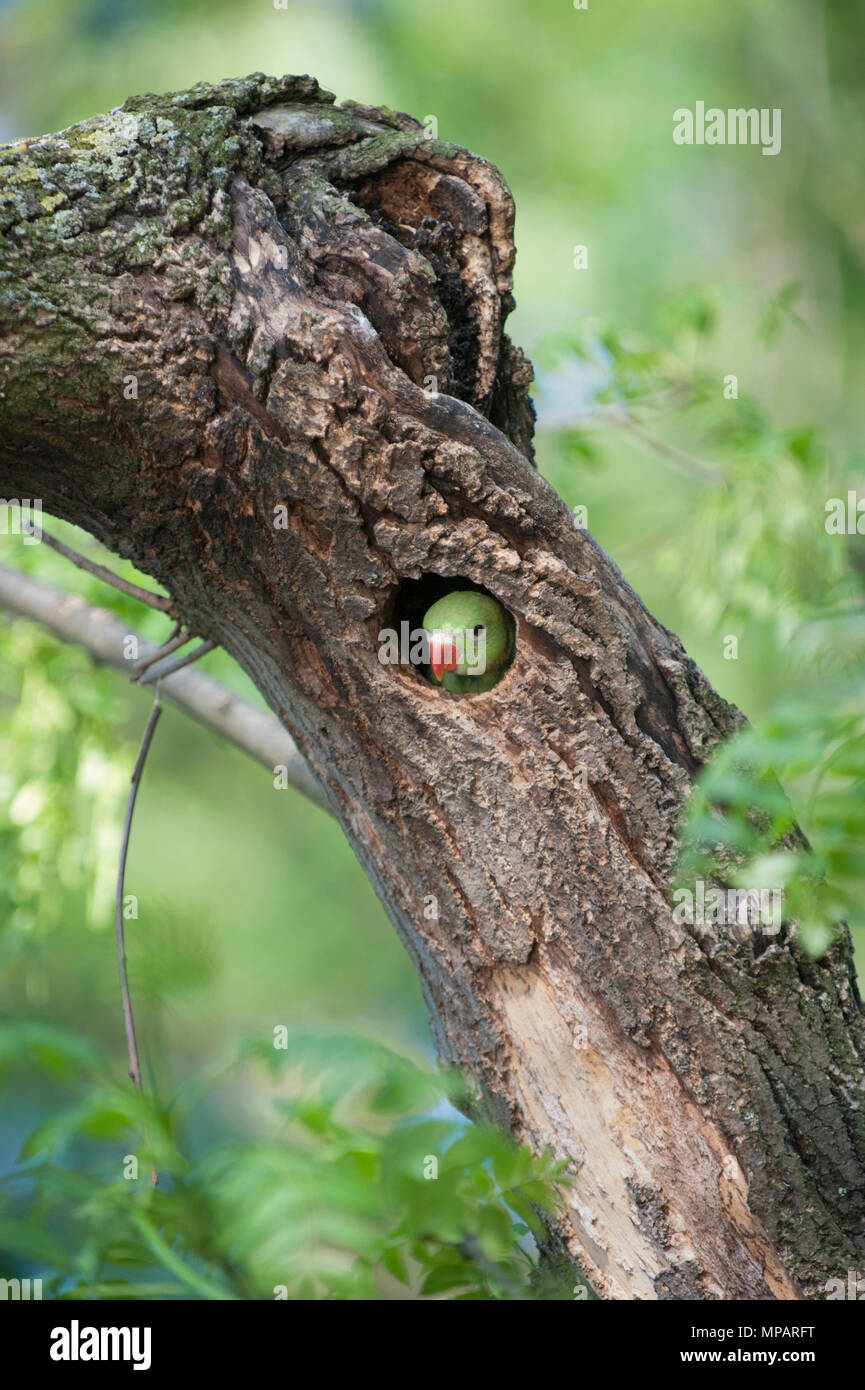juvenile Ring-necked parakeet,(Psittacula krameri), also known as Rose-ringed parakeet,looks out from its nest hole,Regents Park,London,United Kingdom

Image details
Contributor:
Dominic Robinson / Alamy Stock PhotoImage ID:
MPARFTFile size:
34.5 MB (1.3 MB Compressed download)Releases:
Model - no | Property - noDo I need a release?Dimensions:
2832 x 4256 px | 24 x 36 cm | 9.4 x 14.2 inches | 300dpiDate taken:
8 May 2018Location:
Regents Park, London, UKMore information:
The rose-ringed parakeet (Psittacula krameri), also known as the ring-necked parakeet, is a medium-sized parrot in the genus Psittacula of the family Psittacidae that has a very wide range. The rose-ringed parakeet is sexually dimorphic. The adult male sports a red and black neck ring and the hen and immature birds of both sexes either show no neck rings, or display shadow-like pale to dark grey neck rings. Both sexes have a distinctive green colour. Rose-ringed parakeets measure on average 40 cm (16 in) in length, including the tail feathers, a large portion of their total length. Their average single-wing length is about 15 to 17.5 cm (5.9 to 6.9 in). In the wild, this is a noisy species with an unmistakable squawking call, and captive individuals can be taught to speak. It is herbivorous and not migratory. One of the few parrot species that have successfully adapted to living in disturbed habitats, it has withstood the onslaught of urbanisation and deforestation. As a popular pet species, escaped birds have colonised a number of cities around the world, including Northern and Western Europe. Since the population appears to be increasing, the species was evaluated as being of least concern by the IUCN in 2012, but its popularity as a pet and unpopularity with farmers have reduced its numbers in some parts of its native range.